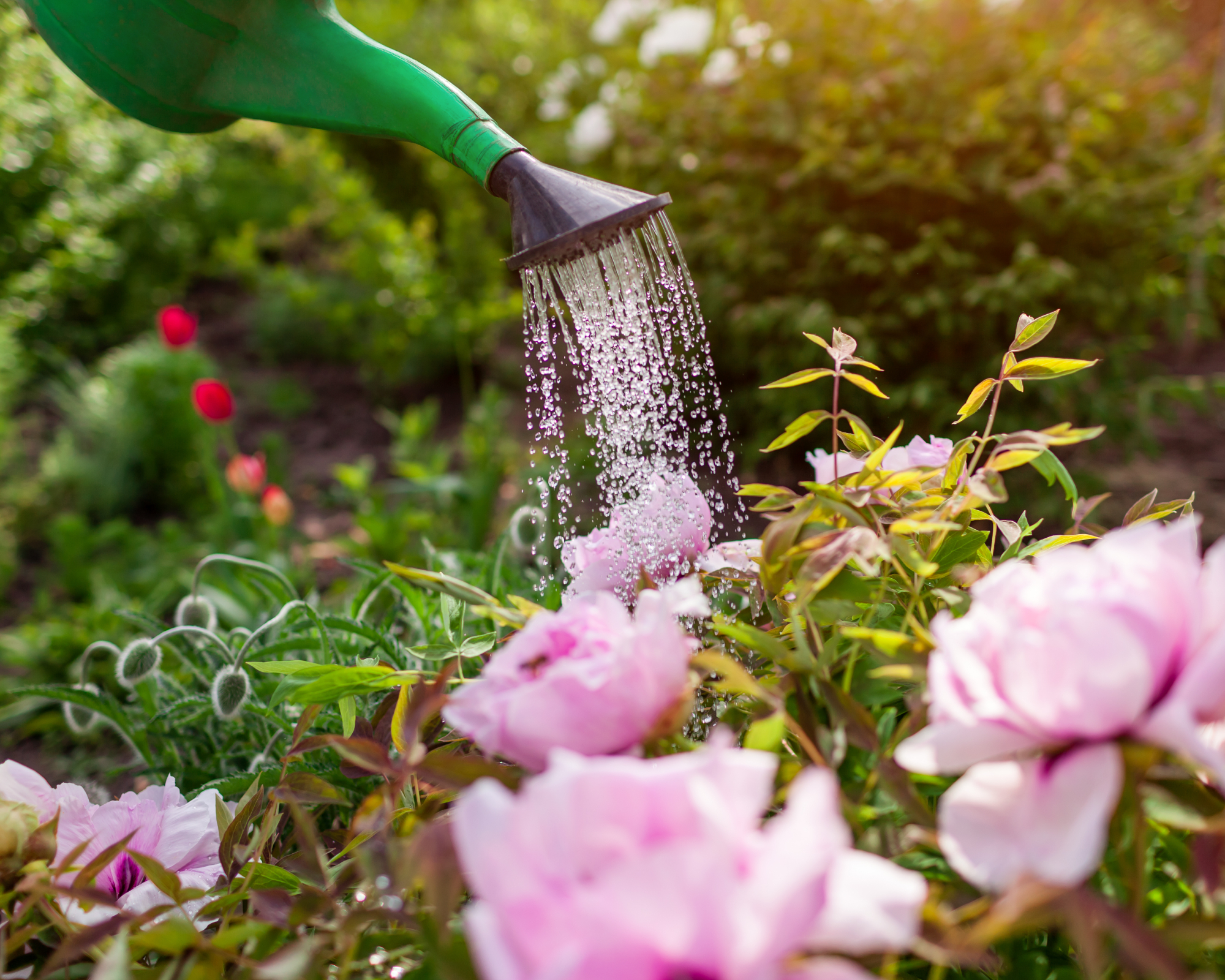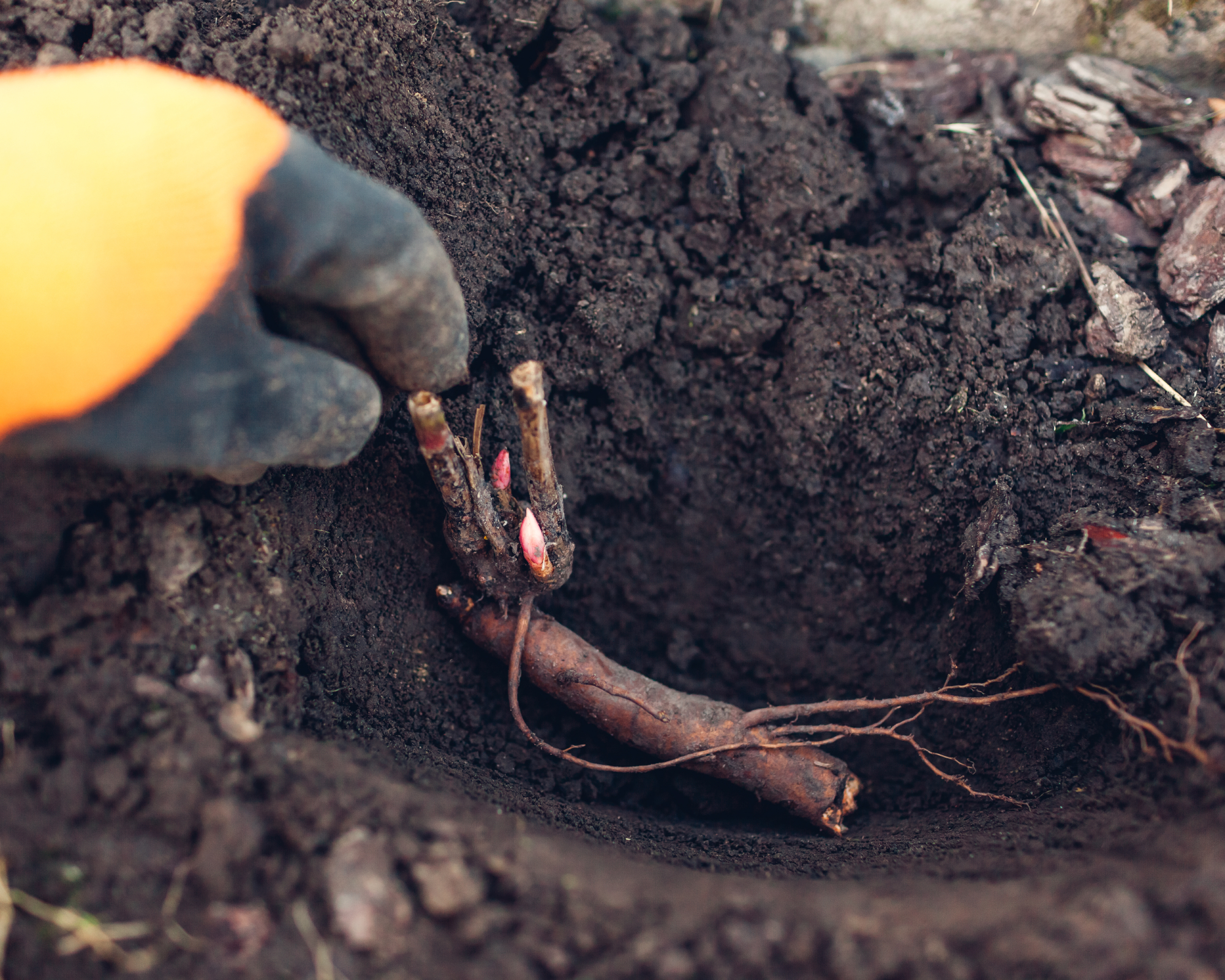Peonies Not Blooming? 6 Common Reasons Why & How To Get More Flowers
Peonies not blooming is a big disappointment. Luckily, we have the solution. Here are the top 6 reasons why peonies refuse to bloom and how to ensure you have plenty of pretty flowers come spring.

Heather Rhoades

Peonies not blooming is one of the biggest disappointments a gardener can face. The peony is known its huge, fragrant blooms that enliven the late spring garden. So when one doesn't bloom, it leaves a big hole in the landscape.
Generally, these plants are easy-care perennials. In fact, when given the proper conditions peonies can grow for 70 years or more. But if not, they may refuse to give you flowers. We'll break down six reasons why peonies won't flower and how to get peonies to bloom.
1. Your Peony Doesn't Get Enough Sun
Most peonies need full sun to produce blooms, however there are peonies for sun or shade. Unless you have a type that can handle shade, this is one of the most common reasons for peonies not blooming.
Perhaps your plant got enough sun in early spring to generate buds, but a nearby tree leafed out and now blocks too much sunlight. This can cause buds to die since the plants no longer get enough sun to support blooming.
2. Your Peony Needs Fertilizer
If your peony is unable to bring up enough nutrients from the soil, it may not be able to produce blooms. Figuring out how to fertilize peonies can be difficult, since they don't like you to disturb their roots or bury them too deeply under layers of compost.
Peonies respond well to compost, but you have to be careful not to pile it too deep or hurt the plants' roots when mixing it into the existing soil. Making either of these mistakes can lead to a reduction in blooms as well. Instead, a better option is to apply a liquid fertilizer like compost tea or seaweed emulsion that will seep into the soil and roots without disturbing them or burying them deeper.

3. Your Peony Was Recently Planted or Moved
These persnickety perennials don't like to be moved. It can take years after transplanting peonies for plants to recover. If you planted or moved your peony in the past four years, it may still be experiencing transplant shock.
Sign up for the Gardening Know How newsletter today and receive a free copy of our e-book "How to Grow Delicious Tomatoes".
Unfortunately, the only solution to this problem is time and a little extra love. Give your peony the proper care and attention it needs for a few years and eventually, it will reward you with blooms.
One good way to give peonies some TLC is to spread a layer of composted cow manure around the base of plants in either early spring or late fall. Be sure not to add too much compost to the plant's root zone, however, or you may run into the next reason for no blooms.
4. Your Peony Is Planted Too Deep
As mentioned before, peonies do not like to be planted too deep. When planting peonies, the eyes of the tubers should be no more than 2 inches (5 cm) below ground level.
If your peonies are planted too deep, the first course of action is to gently remove some soil or mulch from around the base of the plant. If this is not enough to get your peony to bloom, you will need to replant it. Though this will likely delay blooming further, it's better to wait a few years for a peony to flower than to have one that never will.

5. Your Peony Doesn't Get Enough Cold
If you live in a warmer climate, your peony may not get enough cold in the winter months. Peonies need a certain amount of cold weather in order to set buds and to flower. Your peony may be getting just enough cold weather to produce the buds but not enough to make it the last bit to flower.
If you suspect this is your problem, make sure to create an environment that will provide more peony chill hours. In cold months, do not mulch or protect the area around your peony. Try to remove any barriers that block the wind from your garden bed in the winter. While this may seem counterintuitive, if you live in area that barely receives the required chill hours, your peony needs any extra cold it can get.
6. Your Peony Has Bud Blast
Is your peony budding, but not blooming? This is a common problem known as peony bud blast. If your peony develops buds that suddenly turn brown and shrivel up, this is likely the cause. Many a peony owner's hopes have been dashed this way. The good news is that the same reasons that cause a peonies not to produce blooms are the same causes of bud blast.
Make sure your peony receives enough sunlight, fertilizer, and cold. Check your peony is planted at the proper depth and make sure it has had time to become established. Solving these issues and providing your peony with the ideal growing environment will ensure years of beautiful blooms.

Laura Walters is a Content Editor who joined Gardening Know How in 2021. With a BFA in Electronic Media from the University of Cincinnati, a certificate in Writing for Television from UCLA, and a background in documentary filmmaking and local news, Laura loves providing gardeners with all the know how they need to succeed, in an easy and entertaining format. Laura lives in Southwest Ohio, where she's been gardening for ten years, and she spends her summers on a lake in Northern Michigan. It’s hard to leave her perennial garden at home, but she has a rustic (aka overcrowded) vegetable patch on a piece of land up north. She never thought when she was growing vegetables in her college dorm room, that one day she would get paid to read and write about her favorite hobby.
- Heather RhoadesFounder of Gardening Know How